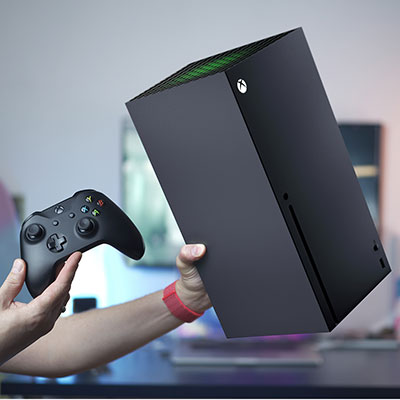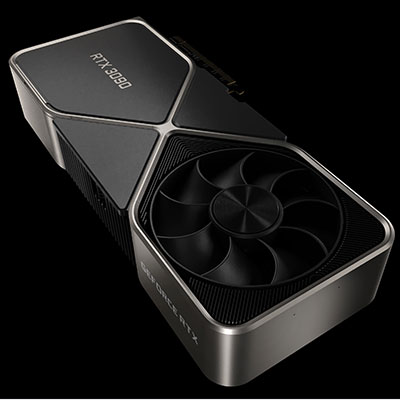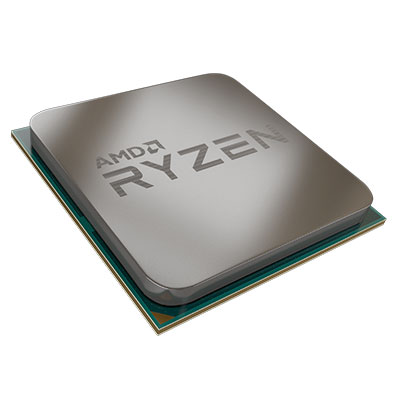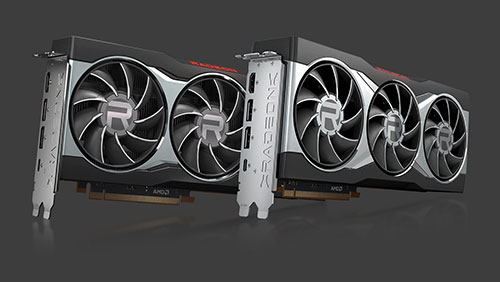2020 was a very unique year in the world of technology and entertainment, a sort of golden age of electronic home entertainment where major products from brands across the entertainment spectrum witnessed simultaneous launches. At the same time, other major technologies and products that were previously out of reach for mainstream audiences, were now suddenly made mainstream. These included everything from UHD (4K) HDR smart televisions, readily available content via streaming services to actually make use of these technologies, and the ready availability of the required internet speeds to stream said content at its highest quality. At the same time, a raft of new graphics cards from both Nvidia and AMD, together with the launch of the PS5 and Xbox Series X have brought next generation gaming technologies right to your living room. All of these launches have taken place in just the last four to six months, with more just over the horizon. Here is a quick summary of all the latest and future developments, together with the knowledge that you require to make informed purchases and take your entertainment to the next level.
Television Revolution
Television technology has been evolving at an astounding rate over the past few years in the home entertainment sector. It all started with the establishment of 720p and 1080p standards, under which the television market exploded in popularity. Eventually, we saw 4K (UHD – Ultra High Definition) screens make their way into the market. But as with most new technologies at the time, these were reserved for only the most expensive of televisions. Furthermore, these new technologies lack one simple thing to actually make them popular – content to watch. Now however, 4K content is pretty much readily available everywhere and you would be hard pressed to even find a television above 40-inches that doesn’t support 4K resolution today.

Furthermore, television prices across the board have plummeted in recent years putting a lot of advanced technologies, previously reserved only for high-end televisions, now within reach. These include technologies such as HDR (High Dynamic Range) and Dolby Vision support, QLED Panels, and advanced smart functionality. Even the prices for OLED TVs have dropped to a reasonable level, although they still sit at a relatively higher price point.
It’s only a matter of time before even these technologies come within easy reach, especially with so many new ones just around the corner. In fact, the first 8K screens have already made their way into the market. Then there are home entertainment technologies such as HDMI 2.1, which sports a bandwidth throughput of 48 Gbits per second allowing you to display 4K videos at framerates as high as 120 frames per second or 8K at 60 frames per second; mini-LEDs, which is a new advanced LED backlighting system that offers better localised dimming for better contrast and quality; and Micro LED, which is a true competitor for OLED screen technology being championed by Samsung. These technologies, together with a host of new televisions making their way into the market in 2021 is sure to drastically alter the home video landscape over the course of the coming year.
Streaming and Internet Speeds
While 8K TVs are already making their way into the market, these televisions are prohibitively expensive and native 8K content to truly utilise their capabilities is extremely limited. However, 4K streaming has now pretty much become mainstream in home entertainment. Furthermore, the current pandemic, together with its accompanying lockdowns, social distancing norms, and closure of theatres have ushered in a new era of direct-to-consumer streaming. As a result, the streaming wars, that were going on even before the current pandemic, have drastically heated up.

Apple TV+ and Disney+, both of which launched somewhere near the end of 2019 have been working hard to ramp up their catalogues and features. Then we have completely new players such as HBO Max, Peacock, and Discovery+ screening home entertainment. This is even before you consider the big players in the market – Amazon, Hulu, and Netflix for regular TV series and movies, and Crunchyroll for fans of Anime. Given that some of these aren’t available to us here in the middle east or are packaged through other streaming services such as OSN, there is a good chance the remaining will eventually make their way here.
What’s important however is the fact that most, if not all, of these streaming services are now competing for their share of customers. As a result, they are each trying to differentiate themselves with feature rich multi-platform apps and increasingly higher-quality original content, including in 4K, 4K HDR, and eventually even 8K towards the end of the year. Moreover, a number of publishers and studios have begun to release their catalogue of movies on streaming platforms alongside their theatrical release.
Streaming such high-quality content however can be quite demanding on your internet bandwidth. So, how fast does your internet really need to be to enjoy such content to the fullest when you want some home entertainment? According to Netflix, SD quality streaming requires speeds of just 3Mbps, while HD quality requires a minimum of 5Mbps. UHD however requires a minimum of 25Mbps. These numbers are however for a single device and any additional devices will require faster speeds. Thankfully, with high-speed fibre now available in most parts of the capital, such speeds are readily available for customers and at reasonable prices as well.
Next Gen Console Gaming
While streaming services and YouTube are the primary sources of 4K content for the general audience, few things drive advancements in entertainment technology forward than gaming. In fact, prior to streaming services becoming mainstream, your PlayStation 4 Pro and Xbox One X were probably your primary source for 4K content. However, even they weren’t powerful enough to output most of their games at native 4k resolutions, most relying on advanced upscaling techniques. However, that all changed in November 2020 with the launch of both the PlayStation 5 and Xbox Series X.
Both the PlayStation 5 and Xbox Series X are incredibly powerful consoles, capable of outputting 4K content at up to 120 frames per second, and even upscale said content to 8K for those newer fancy televisions if needed. Moreover, they both can function as your sole all-in-one home entertainment system as they are also capable of running the most popular streaming apps, as well as play DVDs, Blu-ray discs, and Ultra HD Blu-ray discs.
So, which one should you get? The answer to this question is not as simple as it sounds. If plain power is what you are after, they both feature very similar specs. In fact, they both feature AMD’s 8-core Zen 2 based CPUs (Central Processing Units/Processors) and RDNA 2 based GPUs (Graphics Processing Units/Graphics Cards). On paper however, the Xbox does seem to have the edge with a slightly more powerful CPU, GPU, and storage drive. In practice however, it’s hard to really tell them apart, with their performance being near identical.
However, the hardware is only as good as the software that you can run on it. As such, your decision should always be based on the games you want to play most. Historically, it has always been the Sony console that had the stronger exclusive games line-up, and at launch, the PS5 does seem to have the stronger games line-up. However, Microsoft seems to have learnt from its previous shortcomings and has spent the last couple of years buying up leading game development studios left, right, and centre aimed at home entertainment .
As such, we won’t be surprised if the Xbox eventually ends up with a stronger games line up. Microsoft also seems to have gone out of its way to ensure the Series X is as fully backward compatible as possible. In fact, not only is the Xbox Series X compatible with just about every Xbox One game, it’s also compatible with many Xbox 360 and original Xbox games. The PS5 on the other hand can play just about any PS4 game on the market but nothing further back than that.
It’s quite evident that both consoles are incredibly powerful and are off to an equally strong start. However, it’s just too early to call out one as a clear winner in home entertainment of gaming over the other at this point in time. Personally, we are edging a bit closer towards the Xbox based on the studios it has acquired and the games we can expect on the console as a result. That, however, is a personal choice and if you love your PlayStation exclusives, just go for the PS5. Although, with the current global availability issues, getting your hands on either is not going to be easy.
Next Level PC Tech
As impressive as the consoles are, even they are sadly no match for even a mid to high-end custom PC. Especially so, if you are sporting any of the new hardware that has been released in the past few months.

We are of course talking about the newly launched AMD’s Ryzen 6000 Series and Nvidia’s RTX 30 Series of GPUs. The Ryzen 6000 Series is AMD’s first attempt at Ray Tracing (an advanced lighting technology in games that takes into account how light behaves in real life) capable GPUs and are the effectively the desktop versions of the GPUs available in both the PS5 and Series X. Currently available in three different variants – the RX 6800, RX 6800 XT, and RX 6900 XT, each offering a performance increase of close to 40% over its predecessor and with the latter two more than capable of 4k gaming at 60fps in most titles.
Not to be outdone, Nvidia’s RTX 30 Series GPUs, which currently encompass the RTX 3060 Ti, RTX 3070, RTX 3080, and RTX 3090, also each offer a near 40% increase over their respective predecessors. Such a drastic year-on-year performance increase has not been seen in nearly ten years. However, Nvidia did not stop there. Until recently, Radeon cards were always the GPUs that offered the best bang for your buck. However, with these 30 Series cards, Nvidia decided to launch them at the lowest price point they have done in years, making every card aside from their top-tier RTX 3090 relatively affordable.
Furthermore, these prices when coupled with the substantial performance increase meant that Nvidia was now directly competing with AMD from even a price-to-performance perspective. From a performance standpoint, both the Radeon RX 6000 Series and the RTX 30 Series stand on remarkably similar ground, making the GPU market the most competitive it has been in years. The only edge that Nvidia currently has is the fact that they are now in the second generation of Ray Tracing capable GPUs as opposed to AMD’s first. This has enabled Nvidia to substantially surpass AMD in Ray Tracing performance. We however suspect that AMD will close this gap relatively quickly as newer cards come out and they get more familiar with the technology.
However, when it comes to PCs, GPU weren’t the only major release in the past six months in home entertainment sector. We also saw the release of AMD’s new Ryzen 5000 series CPUs, based on their new Zen 3 microarchitecture. Some of you keen eyed readers may have already realised that unlike the GPUs, these CPUs are a generation higher than the Zen 2 based CPUs being used in the PS5 and Series X consoles.
These new CPUs have already taken the world by storm thanks to their performance and price. In fact, for the very first time AMD has surpassed Intel in terms of market share for desktop processors. However, how long this will last remains to be seen, especially with Intel’s Gen 11 processors just around the corner. Judging by the initial leaks, they are going to be something truly special.
Unfortunately, its not all good news. Getting a hold of either these next gen PC components or the next gen consoles for home entertainment, is proving to be extremely problematic thanks to stock shortages worldwide and unfortunate practice of scalping. Hopefully, these stock issues will be resolved in 2021 and we can all get our taste of Next Gen Entertainment at home.








